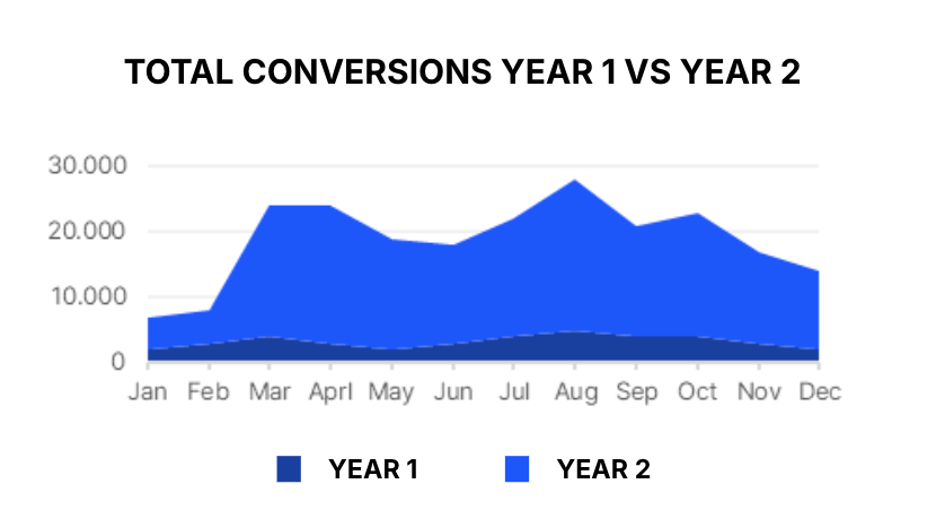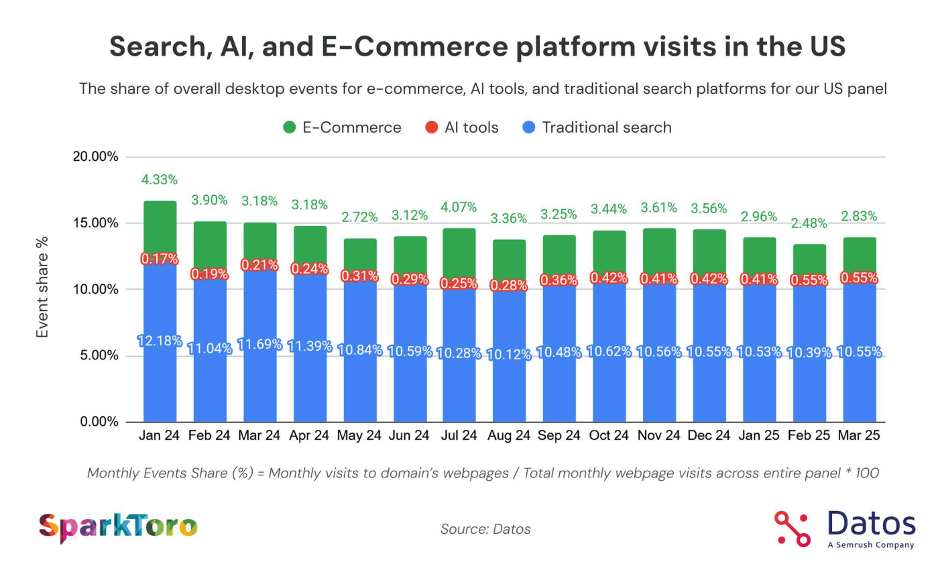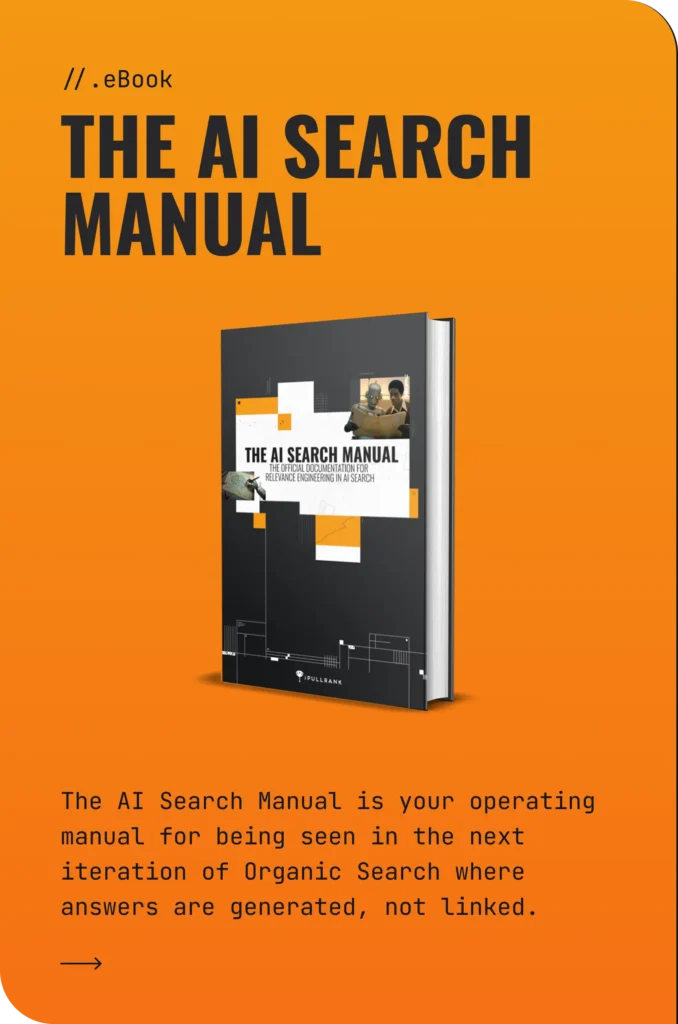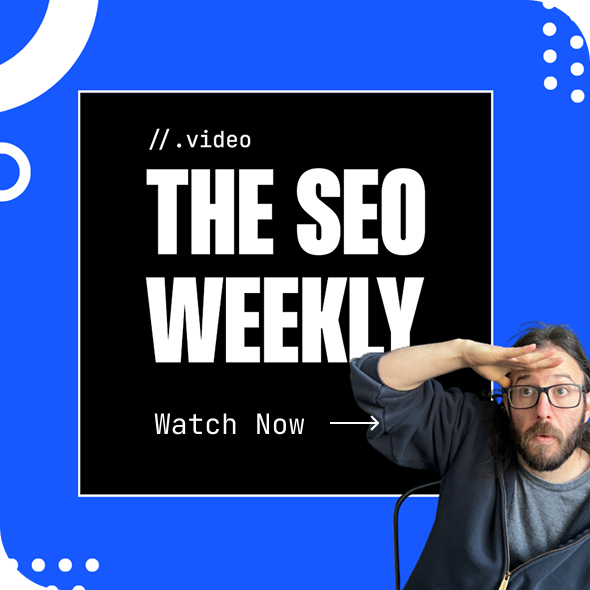As Chief Marketing Officer, you’re under relentless pressure to move fast, stay sharp, and make decisions yesterday. You don’t have time to chase insights; you need partners who bring the signal before the noise even starts. The agencies that rise to the top are more than just responsive; they’re predictive.
Between financial earnings calls, budget pressure, alignment with sales, and brand reputation, there are a plethora of marketing channels to monitor performance and report back to the rest of the C-suite. Consumer behavior can change fast and sometimes you only have a few quarters to make your mark – you can’t afford to be blindsided by competitors dominating ChatGPT and slicing into your organic search traffic.
CMOs like you need to control the narrative of your brand. Imagine you find out from your support team that a large client has left because they were misinformed about your product due to a misleading competitor’s alternative page that was dominating the Google results for bottom-of-the-funnel keywords? The opportunity costs for creating that piece of content would be tremendous. That’s the type of insight that an iPullRank competitive analysis would provide before it gets to that point. It’s your agency’s job to keep your in-house SEO team ahead of those gaps in your visibility.
A great example from our own work at iPullRank is that during a Competitive Analysis for a huge client, we saw a lot (well, really most) of their competitors doing “[ClientName] alternatives” blog and social posts and other software comparisons. This allowed us to bring the opportunity to our client to essentially fight back by writing our own comparison pieces, and adding more about the client’s particular value proposition and differentiators to stand out against nay-sayers. The ability to take note of this and immediately and seamlessly add it to the deliverables was a huge plus for the client, and brought about results pretty quickly.
Do you have Google Alerts set up for your brand? We subscribe to Google Alerts for each client to ensure we have a pulse on your reputation so you can react with speed and efficiency. A simple mechanism, but it delivers articles about our clients’ brands daily. We stay in the loop on what’s happening without having to solicit updates.

We know the right agencies stay relentlessly curious by tracking industry shifts, decoding competitor moves, and tapping into signals others overlook. More than just reacting to change, we’re helping CMOs like you lead it. By surfacing timely, actionable intel without being asked – like assurance reports, content recommendation updates based on traffic drops, industry shifts occurring due to things outside of your control (like tariffs) – we continuously earn our seat at the strategy table and prove our value well beyond execution.
Today I’ll get into five ways the best partners give CMOs the advantage by delivering unprompted strategic and competitive advantage before the deliverables land. Let’s check it out.
Monitor shifts in search behavior: Algorithm updates & AI interface changes
Anticipate change, don’t wait for traffic to drop. From evolving search behaviors to algorithm updates and the rise of AI-powered interfaces, the landscape is, as every SEO knows, always shifting. The smartest partners stay plugged in to these movements and adjust strategies in real time to protect and grow visibility.
Here’s what your agency should be doing:
- Track trending queries and rising keywords to identify shifts in what audiences are searching for and how they phrase it.
- Analyze share of voice and visibility metrics that aren’t tied to the old ways of ranking 10 blue links; things are much more dynamic now and your agency needs to be on the forefront of modern performance metrics.
- Test and adapt content strategies based on new AI-powered search features and platforms (AI Mode, ChatGPT, Perplexity, etc.).
- Audit SERPs regularly to watch for new interface elements like AI Overviews, carousels, or AI Mode results that could reduce traffic.
- Use modernized SEO tools and data dashboards (data visualization is a huge plus for any firm doing any kind of business – not everyone is keen on the raw data) to flag anomalies in traffic or visibility that might signal broader systemic changes.
- Stay active in SEO communities and forums to catch early talk on AI behavior that hasn’t yet made headlines (I’ll happily toot our own horn here – our founder, Mike King, frequently shares his research, insights, and practical recommendations before anyone else in the SEO industry.
Proactively track competitors and surface new positioning shifts or campaign tactics
Leading SEO agencies don’t just optimize for search, we keep a close eye on the competition to spot strategic shifts before they hit the mainstream. A great example that shows insights into market led to explosive growth was when we unlocked record-breaking SEO performance using proactive tracking in partnership with one of the world’s largest banks.
We drove $2.4B in value and a 398% YoY increase in conversions (176,936 leads) in a single year by anticipating a potential downturn in search volume. Our team proactively expanded the bank’s keyword universe using their Keyword Portfolio and content engineering methodology. By mapping the homeownership journey and building a robust education center, the client increased visibility by over 209% and top 3 keyword rankings by 127%.
When COVID-19 unexpectedly created a highly favorable rate environment, the bank was perfectly positioned. So much so that they paused paid search entirely due to the overwhelming organic volume.

This is the kind of thing you want your SEO agency to be on top of. By continuously monitoring how rivals evolve their messaging, content, and technical SEO, top agencies surface early signals that inform smarter positioning and faster response.
If your agency is staying ahead of the curve, you can expect them to:
- Monitor competitor keyword movements to identify shifts in focus, emerging topics, or newly prioritized offerings.
- Analyze backlink profiles to uncover new partnerships, PR campaigns, or content strategies competitors are investing in.
- Use content gap analysis to spot areas where competitors are expanding or repositioning their topical authority.
- Monitor changes in site architecture or URL structures, which may indicate a rebrand, new product rollout, or content consolidation effort.
- Track changes to meta titles, descriptions, and headers that may signal a new messaging strategy or positioning pivot.
- Track SERP feature appearances (like featured snippets or video results) to gauge how competitors are adjusting formats to capture more visibility.
- Watch for spikes in competitor content velocity that may reflect a coordinated campaign push or launch of a new initiative.
Provide quarterly topic or trend briefs specific to the client's vertical
Staying relevant in search means staying ahead of what your audience cares about. By delivering quarterly topic and trend briefs tailored to your vertical, they help you align content with rising demand.
Here’s what those briefs should typically include:
- Curate emerging industry topics based on search trends, social signals, and news cycles relevant to the market.
- Identify seasonal and cyclical search patterns to help align content with peak interest and buying periods.
- Highlight new or growing subtopics within the vertical that competitors haven’t yet capitalized on.
- Analyze top-performing content across the industry to uncover themes, formats, and angles that are gaining traction.
- Include actionable content recommendations tied to the trends, such as blog ideas, landing page concepts, E-E-A-T improvements, etc. – content optimizations are one of our most important deliverables for clients.
- Benchmark trend insights against competitor activity to reveal whitespace opportunities and positioning gaps.
- Visualize data with clear charts or summaries that make it easy for internal teams to prioritize and act quickly.

Source: Datos State of Search Report
Suggest pivots based on audience behavior signals
Audience behavior is one of the clearest and most immediate signals of when and where to pivot your SEO and content strategy. Whether it’s a seasonal dip in traffic, a spike in SERP volatility, or a sudden drop in conversion rates, these are signals begging for strategic interpretation. They tell you what your audience actually wants, how they’re navigating the evolving digital landscape, and where your content may no longer be meeting the moment.
This kind of real-time feedback is especially critical now, as AI-driven changes to Organic Search have made once-stable metrics less predictable. With AI Overviews, zero-click experiences, and increased personalization shifting the user journey, behavior patterns are more dynamic than ever. A piece of content that was a top performer yesterday might lose visibility overnight because the search experience itself has changed.
In this new environment, agility is key. The brands and agencies that win are the ones constantly monitoring audience signals and using them to course-correct. The data is there – for example, if your agency knows you’re launching a new product or service to Gen Z, they should be looking proactively at Gen Z consumer trends and coming to you prepared with recent trend updates 👇

Here’s how top agencies like ours guide these shifts:
- Analyze SERP volatility, visibility and traffic fluctuations to identify when audience intent is shifting or when new competitors are gaining traction.
- Monitor seasonal trends in search volume and engagement to recommend timely content updates or promotional campaigns.
- Track conversion rate changes across key pages to spot mismatches between traffic quality and content/message alignment.
- Use on-site behavior metrics (bounce rate, time on page, scroll depth) as real-time relevance signals – key inputs for Relevance Engineering to spot content fatigue and shifting user intent.
- Correlate traffic changes with external events, like recent tariff announcements, to inform timely messaging, adjust content focus, and align with shifting search intent driven by economic or industry news.
- Use heatmaps and session recordings to surface friction points or shifts in how users interact with site content.
- Recommend content, UX, or targeting adjustments when data suggests evolving audience priorities or pain points.
Flag opportunities for first-mover advantage in emerging channels or content formats
SEO agencies play a critical role in helping brands identify and act on first-mover opportunities across emerging channels and content formats. The challenges around conversational search platforms being probabilistic means they’re always changing, and that requires a change in mindset for your reporting and strategy.
We lead that change by combining data-driven insights with trend-spotting intuition.
Here’s how it’s done:
- Use tools like Google Trends and social listening to identify rising search queries before they peak, flagging spaces with low competition and high interest.
- Monitor how brands are cited in LLMs and optimize for inclusion, identifying gaps competitors haven’t filled yet.
- Analyze engagement metrics across formats (short-form video, podcasts, interactive tools), to recommend channels that align with user behavior but aren’t yet saturated.
- Evaluate opportunities on emerging platforms like TikTok search, YouTube Shorts, or Reddit SEO, where traditional competitors may not yet have a presence.
- Maintain internal test sites to quickly trial new schema types, structured data, and content layouts before rolling them out to clients.
- Provide early insights on algorithm preferences for new content types to optimize for maximum visibility.
- Advocate for agile content strategies that can quickly capitalize on novel formats and channels.
Beyond the Brief: Great Agencies Never Go on Autopilot
The best agencies don’t just follow the tired old set up of quick overview, recommendations, then stale deliverables. The whole process stays active throughout each step. When we see something that can affect the client’s objectives, whether positively or negatively, we take a beat to check it out. We add it to the process. We take it into consideration, bring it to the client, and add it to the overall strategy.
Even if you’re a CMO who’s part of a large organization and are simply too busy to sit in on meetings with your agency, keep in mind that you’ll still want the insights provided by the agency to be so good that your own leadership teams are bringing you these insights on a regular basis. That’s the sign of a great agency that forces leadership to pay attention to them because they have great ideas and insights.
If your current agency isn’t proactively flagging opportunities, delivering strategic guidance, or keeping you ahead of the curve, it might be time to ask: are they keeping pace with the future or playing catch-up? In today’s search landscape, you deserve a partner who’s already working on tomorrow.
The future of SEO lies in moving beyond exploitative tactics and embracing sustainable, ethical strategies that prioritize genuine expertise, original content, and visibility within large language models, because the traditional chase for rankings alone is no longer enough in an AI-driven search landscape.







